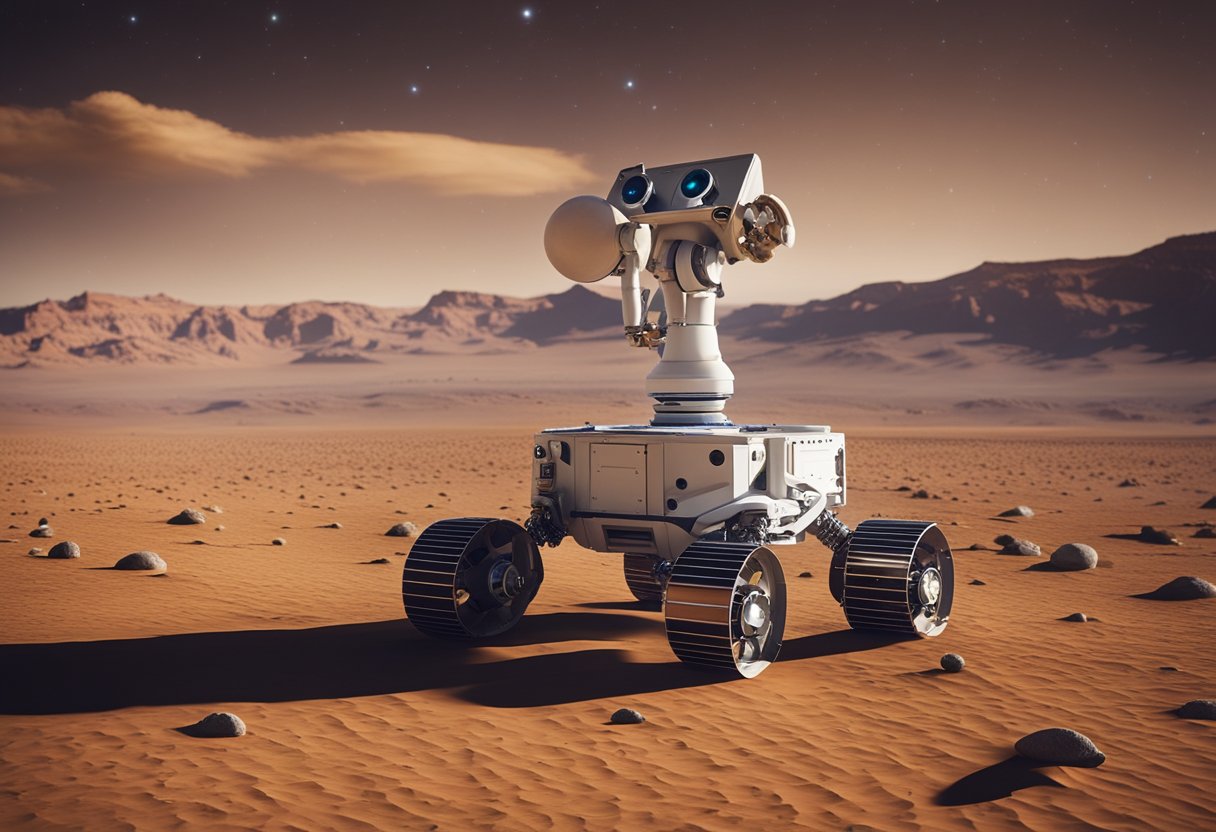
Space Mission Historical Achievements – Space exploration has dramatically expanded our understanding of the cosmos since the mid-20th century. Our journey into space began with the groundbreaking launch of Sputnik 1 by the Soviet Union, marking the advent of human-made objects in orbit. This pivotal event on October 4, 1957, ignited a series of missions that would push technological boundaries and deepen our knowledge of space and our place within it.
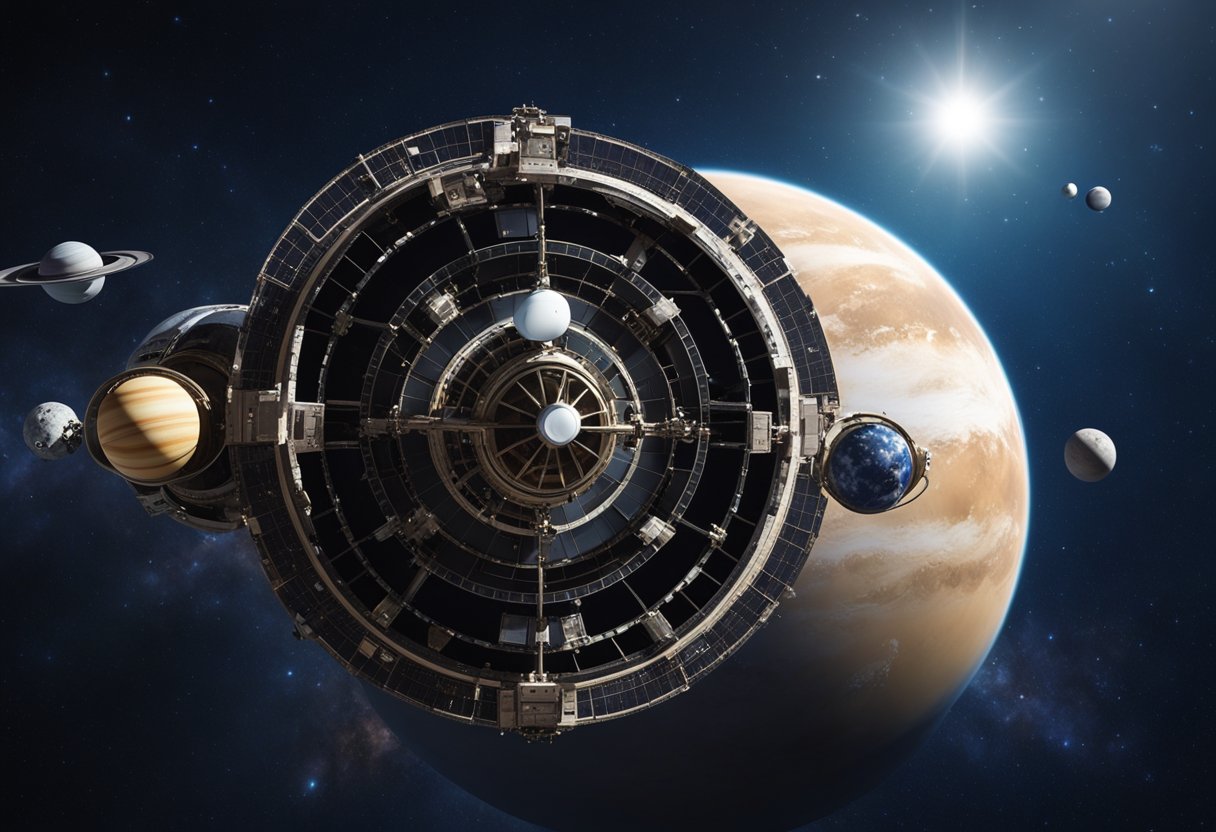
The Apollo moon landings that followed brought humanity to another celestial body for the first time, with Apollo 11 marking a monumental achievement in 1969 as humans set foot on the lunar surface. Over the years, robotic explorers have been dispatched throughout the solar system, enhancing our understanding of planets, moons, and asteroids. The deployment of advanced telescopes has allowed us to peer deeper into the universe, revealing the wonders of galaxies far beyond our own. More recently, space endeavours have expanded to include both public and private ventures, further broadening the scope of space research and opening up the possibility of space tourism through companies like SpaceVoyageVentures.com.
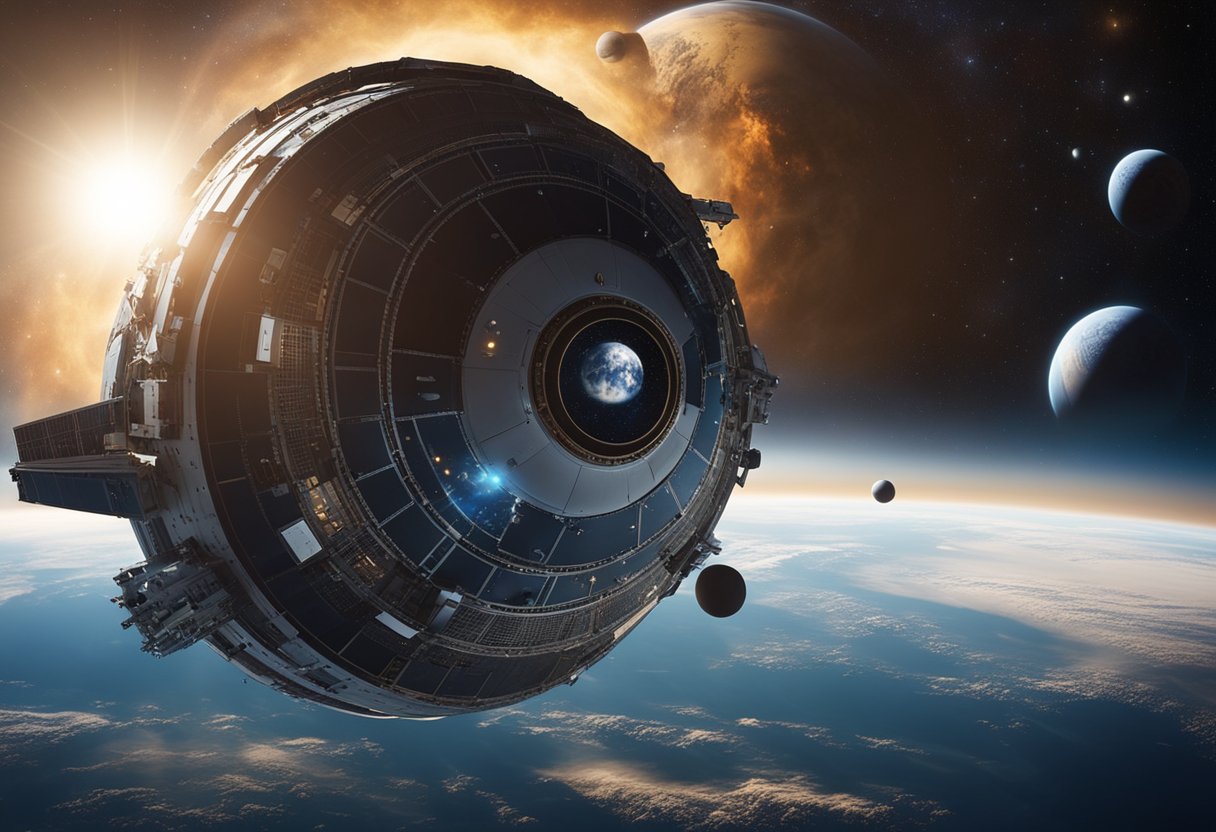
In our journey through the significant milestones of space exploration, we highlight the pioneering missions that carved the initial path for humankind’s cosmic endeavours.
On 4 October 1957, the Soviet Union made history by sending Sputnik, the first artificial Earth satellite, into orbit. This groundbreaking event marked the advent of the space age and the start of our capabilities in satellite telecommunications.
Continuing their trailblazing streak, the Soviet Union propelled Yuri Gagarin aboard Vostok 1 into space on 12 April 1961. His voyage made him the first human to journey into outer space, successfully completing a single orbit around Earth. Gagarin’s achievement is a testament to our inherent curiosity and ambition for discovery.
We saw yet another chapter of history being written by Valentina Tereshkova, who became the first woman in space. On 16 June 1963, aboard Vostok 6, she orbited the Earth 48 times, inspiring generations to come with the extraordinary statement that space is for all of humanity.
The Moon landings remain one of humanity’s greatest achievements, marking the first time we set foot on another celestial body. This section will explore the historic Apollo missions that expanded our understanding of the Moon.
On 20 July 1969, Apollo 11 made history as Neil Armstrong and Buzz Aldrin became the first humans to land on the Moon. The Lunar Module, nicknamed ‘Eagle’, provided the world with the iconic phrase, “The Eagle has landed.” Armstrong’s famous first step on the lunar surface was a monumental event watched by millions around the globe, signifying a major victory in the space race. The Apollo 11 mission not only cemented its crew in history but also the concept of space as a new frontier for human exploration.
Following the success of Apollo 11, there were six more lunar landings under the Apollo program, with Apollo 17 marking the last in 1972. Each mission contributed significant scientific knowledge and explored different regions of the Moon. The Apollo 12 mission confirmed the precision landing capability, Apollo 14 brought back a record amount of lunar samples, while Apollo 15 marked the first use of the Lunar Roving Vehicle, enhancing the range of exploration.
The Lunar Rovers, first introduced during the Apollo 15 mission, allowed astronauts to travel farther from the Lunar Module to conduct scientific experiments and collect samples. These rovers were battery-powered and crucial in the exploration of the lunar surface during the final three Apollo missions. Scientific experiments left on the Moon included seismometers to detect moonquakes, instruments to measure solar wind, and retroreflectors for laser ranging from Earth.
In chronicling the pivotal moments of human spaceflight, we find ourselves reflecting on the courage and technological prowess that propelled humanity beyond Earth’s atmosphere. From pioneering journeys to collaborative international missions, these milestones mark our ascent into the cosmos.
On 5 May 1961, astronaut Alan Shepard became the first American to travel into space, making a suborbital flight aboard the Freedom 7 spacecraft. Shepard’s historic 15-minute voyage demonstrated our capabilities and set the stage for future manned missions.
The first extravehicular activity, or spacewalk, was conducted by cosmonaut Alexei Leonov in 1965. However, it was astronaut Bruce McCandless who, in February 1984, ventured further by performing the first untethered spacewalk with the aid of a Manned Maneuvering Unit, an event that expanded our operational horizons in space.
The Apollo-Soyuz Test Project performed in July 1975 embodied international cooperation in space as American and Soviet astronauts rendezvoused and docked their respective spacecraft. This mission paved the way for the collaborative efforts seen on the International Space Station and aligns with the ethos of unity found on emerging platforms like SpaceVoyageVentures.com, which heralds the era of space tourism and international partnerships.
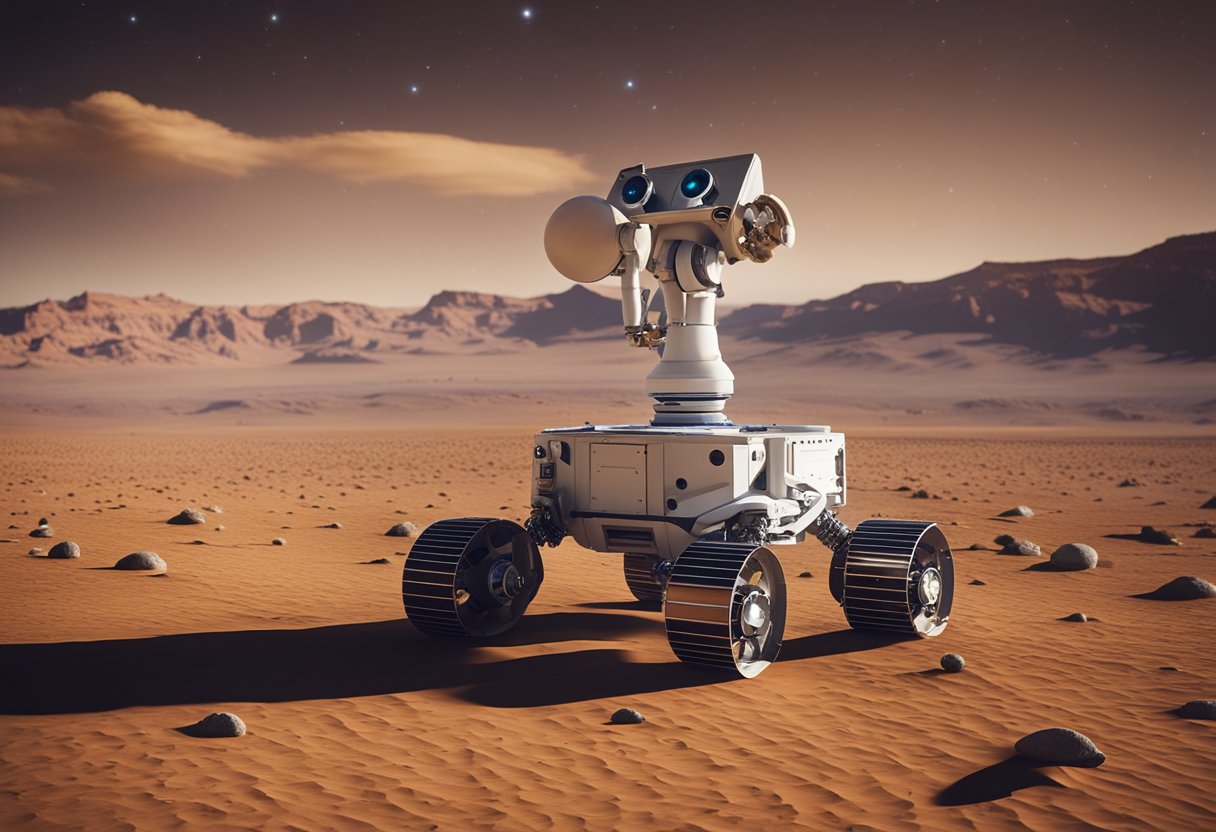
In this section, we explore the significant achievements of robotic explorers which have extended our reach across the Solar System, from the pioneering probes that first ventured beyond Earth, to the sophisticated rovers that traversed the Martian surface, and onwards to the intrepid spacecraft that visited the mysterious comets and asteroids.
The Pioneer and Voyager missions set the stage for interplanetary exploration. Pioneer 10 marked humanity’s first journey through the asteroid belt, becoming the first spacecraft to make a direct encounter with Jupiter. Its sibling, Pioneer 11, followed closely, expanding our knowledge of the outer planets. Meanwhile, Voyager 1 and Voyager 2 embarked on a ‘Grand Tour’ of the Solar System, sending back unprecedented data and imagery of the giant planets and their moons, pushing the boundaries of our understanding and continuing to relay information from beyond the heliopause.
Our investigations of Mars have been revolutionised through a cadre of rovers and landers which have scoured its surface. From the modest Sojourner, a component of the Mars Pathfinder mission, we took our initial steps in mobile planetary exploration. It laid the groundwork for more sophisticated forerunners like the Viking 1 lander, which delivered the first colour photographs of the Martian surface.
Embarking on some of the most audacious expeditions, spacecraft like Hayabusa and Rosetta have reached out to comets and asteroids to glean insights into the early Solar System. Hayabusa astounded us by returning samples from the asteroid Itokawa, and Rosetta became the first to orbit and land a probe on a comet, unveiling the intricate processes that shape these celestial bodies.
Each of these missions has broadened our cosmic perspective and laid a foundation for what could one day be incorporated into the knowledge base for ventures like SpaceVoyageVentures.com, enhancing the possibilities for future space tourism.
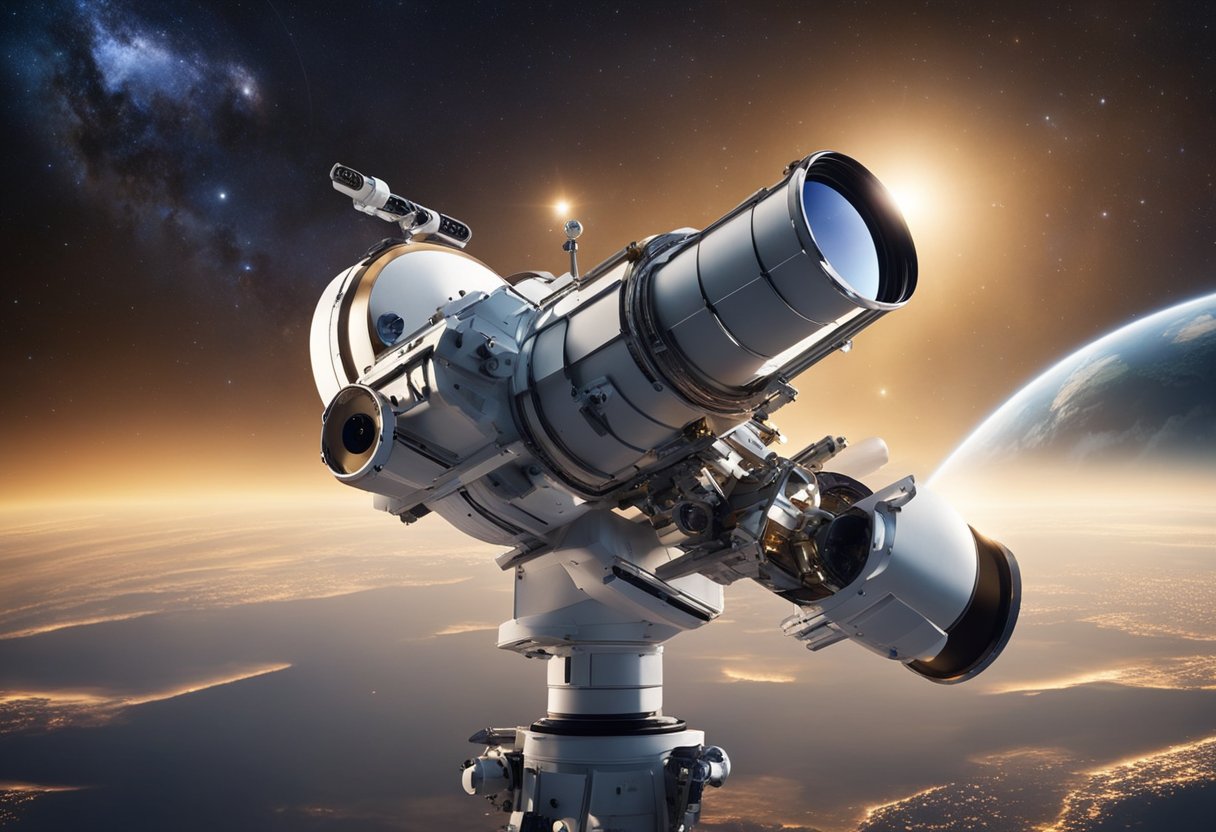
Our exploration of the cosmos has been dramatically transformed by astonishing technological advancements in telescope technology. We’ve witnessed milestones in our understanding of the universe, breaking barriers that once seemed insurmountable.
The Hubble Space Telescope, a remarkable project launched in 1990, has provided us with profound insights into the vastness of our universe. With its ability to capture high-resolution images, Hubble has enabled us to study the composition of galaxies, observe stellar births and deaths, and measure the rate of expansion of the universe with unprecedented clarity.
In the realm of X-ray astronomy, the Chandra X-ray Observatory plays a pivotal role. Since its deployment in 1999, Chandra has been unravelling the mysteries of phenomena such as black holes, quasars, and supernovae. Its high-resolution mirrors and detectors are designed to observe X-rays from high-energy regions of the universe, which are typically obscured from view in the visible spectrum.
Our search for exoplanets has been greatly enhanced by telescopes such as Kepler and the James Webb Space Telescope. Kepler, launched in 2009, was specifically designed to detect Earth-size exoplanets orbiting other stars in the habitable zone. It utilises the transit method, monitoring the brightness of stars to spot tiny dips caused by planets crossing in front of them. The James Webb Space Telescope, with its sophisticated instruments, is poised to take over from illustrious predecessors, providing us with even more detailed observations and potentially unveiling Earth-like exoplanets capable of supporting life.
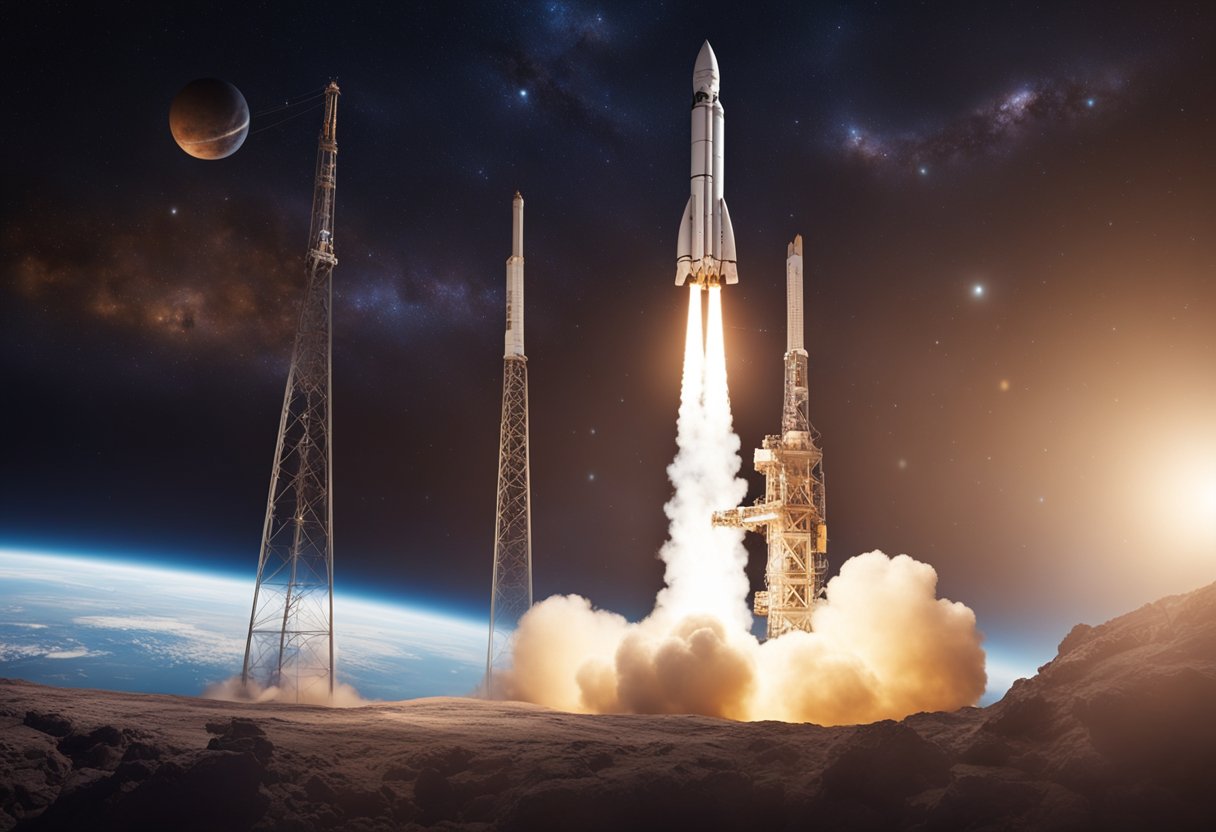
In recent years, we have witnessed significant milestones in space exploration, which include advancements on the International Space Station (ISS), entrance of private companies into the market, and spurred competition in the race to Mars.
The ISS remains a symbol of international cooperation in space. Since the year 2000, it has served as a habitable artificial satellite and a microgravity and space environment research laboratory where scientific research is conducted in astrobiology, astronomy, meteorology, physics, and other fields. The space station has been crucial for educational outreach and has seen multiple expansions, including the addition of large solar arrays.
A renaissance in space exploration has been catalysed by private companies, notably through reusable rocket technology like Falcon 9 from SpaceX. This era of commercial spaceflight has not only driven down costs but also increased the frequency of launches. In addition, companies like SpaceVoyageVentures.com are exploring the realm of space tourism, offering a glimpse into a future where trips to space are not just for astronauts but for civilians as well.
Fueled by President Kennedy’s legacy from the Apollo program, the modern odyssey to Mars captures our collective drive to explore. Space agencies and private entities alike are vying to place humans on the Martian surface this decade, with robotic precursors like rovers mapping the terrain and probing for signs of past life, laying the groundwork for future colonists. Mars stands as the next great horizon for discovery and human achievement in our ongoing space narrative.
Through these contemporary endeavours, we are continuing to push the boundaries of what’s possible in space exploration, making strides toward not only new scientific discoveries but also towards the potential of making space a place not just for science, but for the human experience as well.
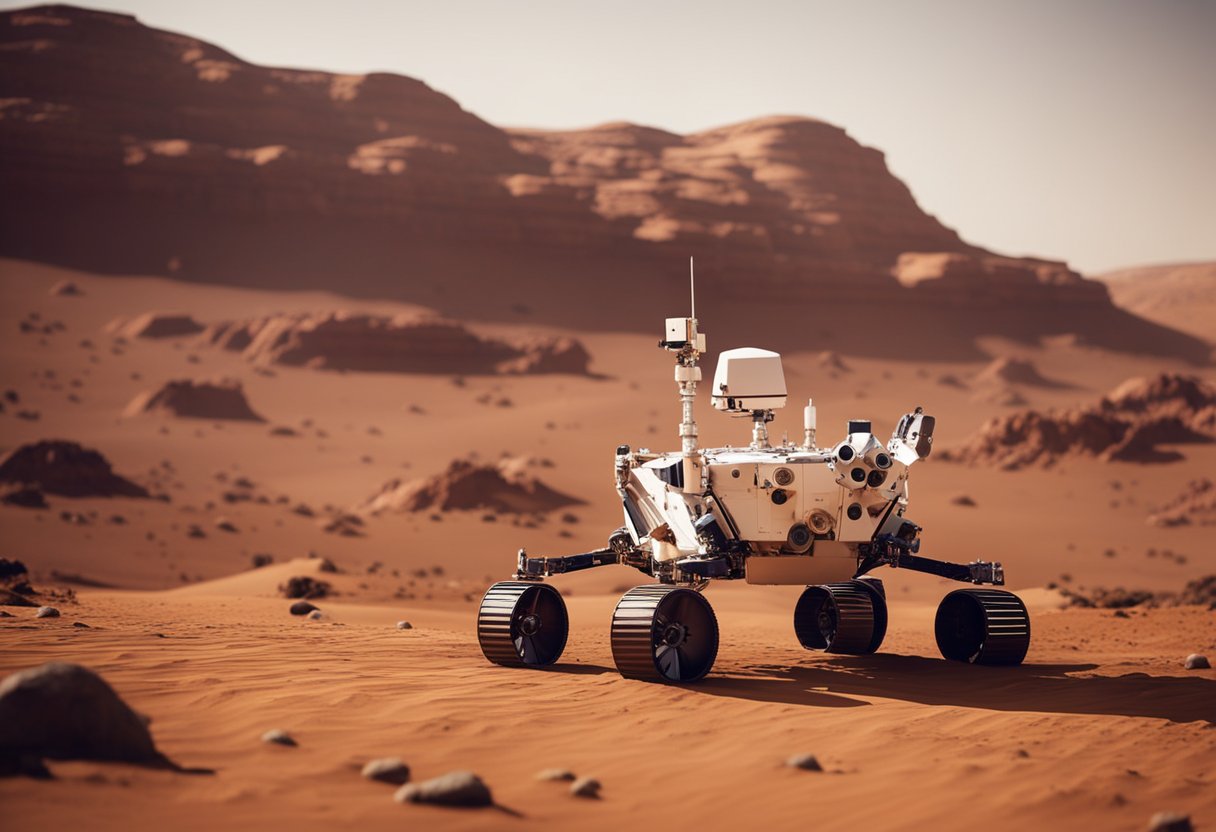
In discussing the milestones of Martian exploration, we must acknowledge the missions that have paved the way for our current understanding of the Red Planet. These missions range from early reconnaissance to advanced landers and rovers, each contributing unique insights into Mars’ properties.
The quest to explore Mars began with rudimentary flybys, the most notable being Mariner 4, which in 1965 delivered our first close-up photos of the Martian surface. This spacecraft revealed a cold, cratered world, transforming our perceptions of the planet. Following these initial endeavours, the Soviet’s ambitious Mars 3 in 1971 managed to become the first to achieve a soft landing on Mars, albeit briefly; it transmitted from the Martian surface for around 20 seconds before falling silent.
Our mastery over Martian terrain truly took a leap with the deployment of rovers. The Mars Pathfinder mission’s Sojourner rover, landing in 1997, served as a proof of concept for free-moving exploratory vehicles on extraterrestrial surfaces. Then, the sophisticated Viking 1 lander operated on Mars for over six years, presenting us with over 36,000 images and a plethora of scientific data, revolutionising our understanding of Mars. This mission’s success underscored the potential for extensive exploration by later rovers such as Spirit, Opportunity, and Curiosity.
While we have managed to survey Mars remotely, the next grand goal is to return samples from Mars to Earth. The concept of Mars Sample Return has captivated scientists and the public alike, promising first-hand examination of Martian materials. Collaborations between agencies, including NASA and the European Space Agency, are underway to materialise this objective, which could illuminate Mars’ capacity to harbour life and its geological evolution.
Through these pioneering missions, we have not only gleaned vital information about Mars but also raised the bar for space exploration. We invite you to learn more about the wonders of space and the potential for future space tourism at SpaceVoyageVentures.com.
Space exploration has significantly contributed to our comprehensive understanding of the cosmos. Through various missions and studies, we, as an ever-curious species, have unravelled the mysteries not visible from Earth’s surface.
The Cosmic Microwave Background (CMB), often referred to as the echo of the Big Bang, provides us with a snapshot of the infant universe. Analysing fluctuations in this radiation has enabled us to understand better the universe’s composition, structure, and evolution. Notably, missions like Planck have observed the CMB to refine our knowledge of these cosmic phenomena.
These two elusive components make up a significant portion of the universe. Dark matter acts as an invisible scaffold for the structure of galaxies, while dark energy is driving the accelerating expansion of the universe. We have yet to directly detect them, but their indirect effects observed through astrophysical phenomena unveil their presence in the cosmos.
Our current understanding of the universe’s origin stems from the Big Bang theory, describing the universe’s expansion from a singularity to its current state. Space missions that study the residual heat from this event, the CMB, help us piece together the timeline of the universe. Moreover, discoveries about the universe’s rate of expansion fuel ongoing research in cosmology, enriching our knowledge and leading to profound questions about our universe’s ultimate fate.
In our pursuit to understand space, we acknowledge the role of both cosmonauts and astronauts who have ventured beyond Earth’s confines. As we continue to explore, SpaceVoyageVentures.com serves as a gateway documenting past, present, and the horizon of space travel which may soon include tourism, bringing the cosmos closer to us all.
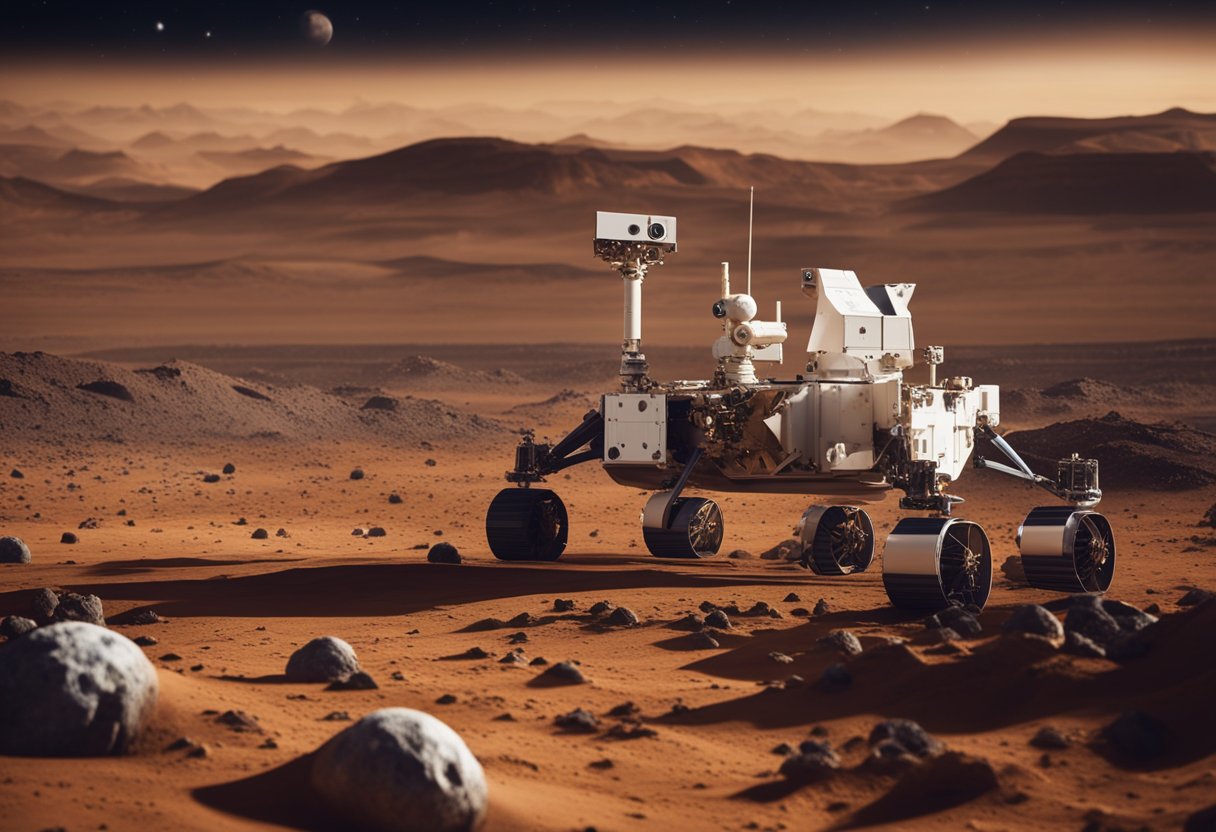
The chronology of space missions reflects human ingenuity and technological progress. We detail the steps humanity has taken in space exploration, noting the missions that have expanded our understanding and the anticipation of future endeavours.
Since the dawn of space exploration, numerous human and robotic missions have successively marked every decade. The 1950s saw the inception of our journey into space with events like the launch of Sputnik by the Soviet Union, which ushered in the Space Age. The 1960s were defined by pioneering human expeditions, most notably Neil Armstrong setting foot on the Moon. Each subsequent decade brought its own advancements: the 1970s experienced extended lunar missions and the advent of interplanetary exploration, while the 1980s and 1990s saw the establishment of long-duration spaceflights and the construction of the International Space Station. The turn of the millennium witnessed the Mars rovers and orbital telescopes enhancing our cosmic perspective.
Here is a brief timeline highlighting key missions:
Looking ahead, we anticipate significant progress in space exploration. Emerging players like SpaceX and Blue Origin are developing technologies for reusable rockets, further reducing the cost of accessing space. On the horizon, missions such as Artemis set the stage for a return to the Moon and a stepping stone to Mars. Additionally, the burgeoning space tourism sector, as highlighted by SpaceVoyageVentures.com, indicates that soon not only astronauts, but also private individuals, will gaze upon Earth from above, marking a new era in our cosmic adventure.
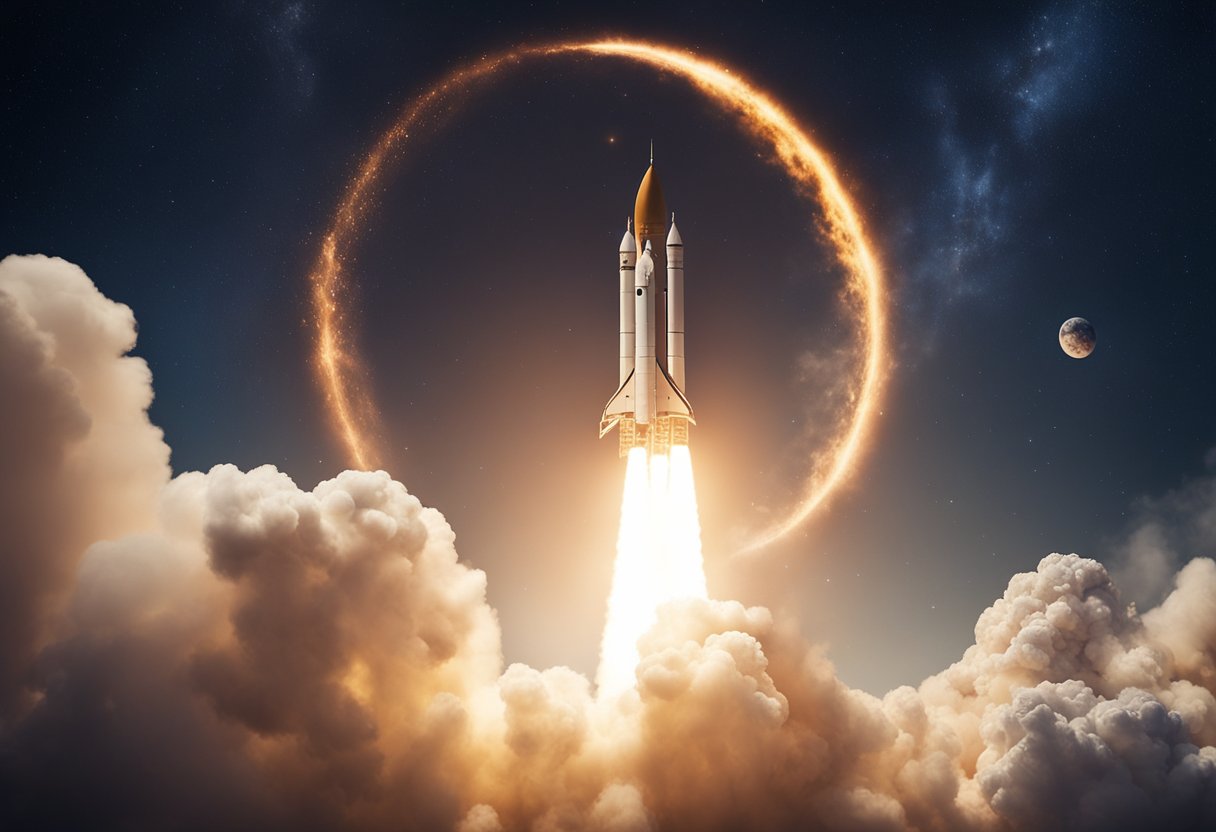
The strides made in space exploration have sown seeds of inspiration, innovation, and international cooperation that continue to flourish. We reflect on the prominent ways these achievements have resonated throughout society and technology.
Space exploration has consistently galvanised the public imagination. The Apollo 11 moon landing, which set humans on the lunar surface for the first time, stands as an enduring beacon of what can be achieved. Our ventures into space serve as a testament to human curiosity and ambition, encouraging each new generation to dream bigger and strive further. The allure of the cosmos has led to the emergence of websites like SpaceVoyageVentures.com, capturing the collective yearning for the stars and the potential for space tourism.
Space missions necessitate cutting-edge innovation. Technologies developed for these complex endeavours have often found their way into our daily lives. For instance, satellite communication, now a backbone of global connectivity, was born from the need to stay in touch with astronauts. The miniaturisation of electronics was crucial for space travel, paving the way for compact computers and smartphones. The Space Shuttle’s contributions to both the Hubble Space Telescope and the International Space Station exemplify the dual pursuits of scientific advancement and practical application.
Our forays into space have fostered an unprecedented level of international teamwork. Agencies like NASA, ESA, and Roscosmos pooling resources and expertise have become the norm. Such collaborations help transcend terrestrial disputes, uniting us in the common goal of exploratory progress and interstellar understanding.
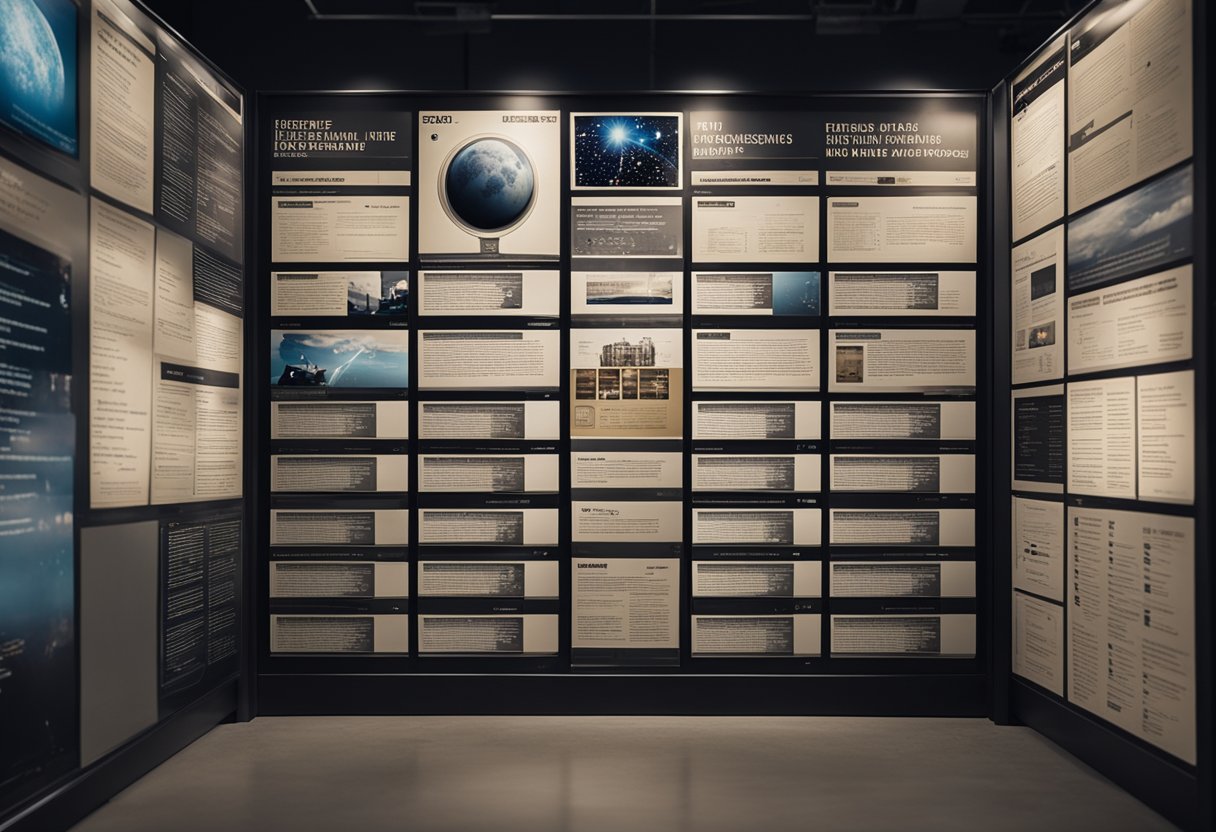
We’ve collated some of the most pertinent questions about space exploration’s milestone achievements, addressing the progression and the eminent future missions that continue to pique our collective curiosity.
We have witnessed iconic moments in space exploration that have redefined our place in the cosmos, such as Yuri Gagarin’s historic voyage as the first man in space aboard Vostok I, and the Apollo 11 mission, which fulfilled humanity’s dream of walking on the Moon.
The Apollo moon landings, particularly, Apollo 11’s first manned Moon landing, and the Voyager missions, which provided unprecedented data about the outer planets, are hailed as some of the most triumphant in terms of scientific and technological advancements.
Initially, our ventures into space were limited to low Earth orbit explorations. Over the years, we have progressed to sending robotic probes to distant planets, utilising reusable spacecraft, and harnessing sophisticated telescopes to observe the universe’s furthest reaches.
Our forthcoming endeavours include missions like NASA’s Artemis program, aiming to return humans to the Moon, and the James Webb Space Telescope’s mission to explore the universe’s infancy. Furthermore, missions documented by SpaceVoyageVentures.com promise the advent of space tourism, where we might witness civilians experiencing space travel firsthand.
The launch of the Hubble Space Telescope revolutionised our understanding of the universe’s age and expansion. The discovery of water on Mars and the first gravitational wave detection are other milestones that have significantly shifted our understanding of the universe.
NASA’s Apollo missions, the Space Shuttle program, the Voyager probes, and their role in the International Space Station establishment are among the significant achievements that have solidified NASA’s central role in advancing space exploration.